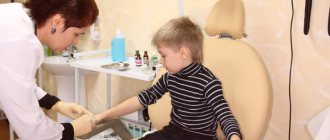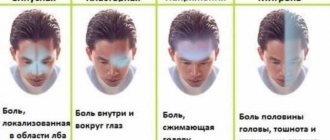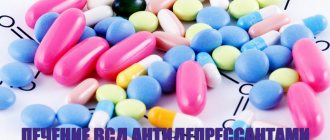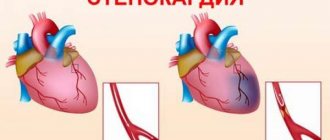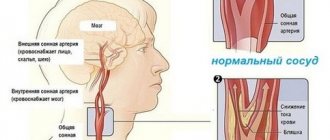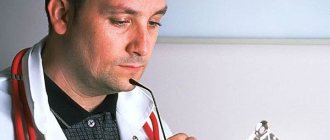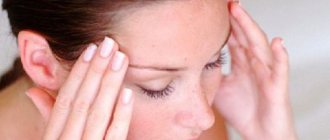DlyaSerdca → Heart diseases → VSD → What drugs are prescribed for the treatment of vegetative-vascular dystonia?
A functional pathology in which a malfunction of the nervous system occurs is called vegetative-vascular dystonia.
With this disease, there is a disruption in the functioning of both parts of the nervous system: sympathetic and parasympathetic.
Vegetative-vascular dystonia (neurocirculatory dystonia) is a chameleon disease, due to the fact that its symptoms are similar to those of other serious diseases. Further in the article the causes, symptoms of the pathological condition and remedies for VSD, which provoke a decrease in its clinical manifestations, will be described.
Symptoms of the pathological condition
The most common sign of dystonia is disturbances in the functioning of the cardiovascular system. Painful sensations in the heart area can be caused by pathologies of the coronary arteries.
VSD is characterized by: a feeling of weakness, a lump in the throat, difficulty breathing, fatigue.
Sweating, agitation, trembling and rapid heartbeat are typical for patients with dystonia, as well as for women during PMS. Due to the similarity of symptoms, VSD is often confused with other, more serious diseases.
I would like to say that vegetative-vascular dystonia brings a lot of suffering to people.
Symptoms of neurocirculatory dystonia in children are:
- constant fatigue;
- increased intracranial pressure;
- constant headaches;
- absent-mindedness and memory impairment.
In adults, vegetative-vascular dystonia manifests itself:
- dizziness;
- irritability;
- constant surges in blood pressure;
- insomnia, phobias, anxiety;
- headaches.
In addition to these signs, specialists also observe less common manifestations, including:
- diarrhea, constipation;
- itching and pain when urinating,
pain and heaviness in the right hypochondrium;
- frequent heartburn, gag reflexes;
- feeling of bitterness in the mouth, shortness of breath;
- bloating;
- pain syndromes in the area of the shoulder blades and neck;
- numbness of hands, chills.
In a patient with vegetative-vascular dystonia, the color of the skin may change, it may become bluish or pale. Patients with VSD are more weather dependent than other people. The development of nervous redness in the chest and neck area is typical for women suffering from dystonia.
Root causes
Modern medicine does not have the exact reasons that provoke the development of this pathology, since its formation can be provoked by various factors. Experts identify a number of risk factors, the occurrence of which increases the likelihood of the formation of a pathological condition:
pathological sleep disorder;
- disruption of the functionality of the endocrine system - hypothyroidism, diabetes mellitus;
- hormonal changes in the body - menopause, pregnancy;
- neuroses or chronic stress;
- influence of hereditary factors;
- sudden change in the external environment;
- physical, mental overload;
- intoxication of the body, severe infections, decreased levels of vitamins;
large amounts of alcohol consumed;
- internal organ injuries;
- allergic diseases;
- disruption of the central nervous system;
- problems with the spinal column - osteochondrosis, etc.;
- pancreatitis, hypertension, peptic ulcer;
- various sexual dysfunctions.
What is vegetative-vascular dystonia
Regular moderate physical activity is an important component of non-drug treatment for VSD.
The development of pathology is caused by disturbances in the functioning of the autonomic nervous system, which is responsible for the functions of all internal organs without the participation of consciousness. Therefore, treatment of this syndrome is aimed primarily at restoring the balance of inhibition and activation processes in the autonomic nerve centers.
The main types of VSD are distinguished according to the level of blood pressure - hypo- or hypertensive, as well as cardiac, which is accompanied by disturbances in the functioning of the heart.
The symptoms of vegetative-vascular dystonia are varied, and the classification of this condition is very difficult. Non-drug medications are mainly used in treatment:
- moderate physical activity;
- stress management;
- adequate sleep and nutrition;
- medicinal baths and others.
The article will pay special attention to medications that are prescribed for VSD.
Features of treatment
To carry out effective treatment of vegetative-vascular dystonia, it is necessary not only to eliminate its main manifestations, but also to relieve other symptoms that significantly worsen the patient’s condition of life. In the presence of neurotic disorders, complex treatment is carried out, during which psychotherapy is used.
It is recommended to use non-drug methods to normalize the psycho-emotional sphere and strengthen normal patterns of nervous activity.
In modern medicine, the following non-drug methods are used to treat vegetative-vascular dystonia:
- breathing exercises;
- acupuncture;
- massages;
- physiotherapy;
- physiotherapy;
- phototherapy.
Treatment of hypotonic type VSD
For the treatment of patients with this type of vegetative-vascular dystonia, a contrast shower is suitable, as well as a tonic massage using active techniques at a fast pace to stimulate the nervous system and increase vascular tone, which leads to an increase in blood pressure.
For this type of VSD, preparations of ginseng, eleutherococcus, and lemongrass are recommended, which stimulate the nervous system and increase immunity.
Among the medications, antidepressants (amitriptyline) are also prescribed, which not only improve mood, but also improve performance, nootropics (piracetam, Noben, Fezam, glycine), which reduce oxygen peroxidation and improve blood supply to brain tissue.
For VSD of the hypotonic type, it is possible to prescribe psychostimulants to activate the nervous system (injecting caffeine subcutaneously or taking tablets orally). To reduce astheno-neurotic manifestations of the disease, glycine tablets are prescribed along with caffeine.
Use of medications
Based on the symptoms and their severity, the following medications are used to treat vegetative-vascular dystonia:
Psycholeptics - Novopassit, Persen.
- Anxiolytic drugs - Tranxen, Gidazepam, Alprazolam, Relanium.
- Serotonergic and tricyclic antidepressants are used to relieve pain of various localizations - Prozac, Coaxil, Clomipramine, Tsipramil.
- Antidiarrheal drugs (Lopedium, Imodium) and sorbents (Smecta) are used along with limiting the amount of fiber in the diet.
- For constipation, macrogols should be used - Fortrans, Lavacol; laxatives – Duphalac; It is also recommended to enrich the diet with foods rich in fiber, fruits and vegetables (to increase the amount of vitamins), and give up bad habits.
Phentolamine and Pyrroxan are taken to reduce fever. Elimination of headaches, heaviness and noise in the head is carried out using Detralex, Venoplant.
- In case of excessive sweating, the skin is treated with solutions of tannic acid, potassium permanganate, glutaraldehyde.
- Oxybral, Cavinton, Xanthinol nicotinate are tablets used to eliminate dizziness due to high blood pressure. Their use improves cerebral circulation.
- For low blood pressure, take Memoplant, Ginkofar - medications that contain ginkgo biloba extract.
Based on the above, it can be argued that there are a lot of medications for the drug treatment of vegetative-vascular dystonia. This is caused by the need for good symptomatic therapy, which is aimed at reducing and treating all possible manifestations of this pathology.
There is a list of medications that, in case of vegetative-vascular dystonia, only help to increase the resistance of the immune system and have a general strengthening effect on it, among them:
beta-blockers are used for severe tachycardia and unstable blood pressure - Propranolol, Atenolol. Reducing pain syndromes in the heart, possibly with the use of valerian tincture, Verapamil, Valocordin;
- vitamins of groups B and C;
- mineral groups of drugs containing vitamins such as selenium, magnesium, zinc;
- Among the metabolic drugs it is worth taking are ATP-long, Riboflavin, Actovegin.
Treatment of VSD of the hypertensive type
To treat VSD, drugs from the following pharmacological groups are needed:
- Sympatholytics – reserpine. Belongs to the group of antihypertensive drugs, that is, drugs that reduce blood pressure by affecting the lumen of blood vessels.
- Beta-blockers: (selective and non-selective) propranolol, atenolol, talinolol - drugs that affect the frequency and strength of heart contractions. This leads to a decrease in blood pressure, a decrease in heart rate and improved blood supply to the heart.
- Antiarrhythmic drugs include 5 main groups. But not all drugs are used to treat vegetative vascular dystonia, but only some of them. These include asparkam, amiodarone, panangin.
- Means that improve blood supply to the brain - dilate cerebral vessels and increase blood flow to the head. Such drugs for the treatment of hypertensive VSD include vinpocetine, Cavinton, nicergoline.
- Patients with vegetative-vascular dystonia of the hypertensive type often find it difficult to fall asleep, so they need to take sleeping pills such as Melaxen, Sonnat and others, as well as tranquilizers. The latter are necessary to relieve anxiety and phobic disorders. They also have a sedative effect and are able to relax muscles.
- From the group of tranquilizers, drugs related to anxiolytics (Seduxen) are prescribed for the treatment of vegetative-vascular dystonia. Also, such people may suffer from headaches, and to relieve them they have to resort to painkillers. Antidepressants (amitriptyline) are often prescribed to relieve headaches.
Non-medicinal remedies include relaxing aromatic baths. Contrast showers for this type of vegetative-vascular dystonia are not recommended, as it can cause vasospasm and, as a result, a rise in blood pressure, deterioration of blood supply to the brain and a new attack of VSD.
Drugs and their action
Let's take a closer look at some of the above drugs and vitamins.
Gidazepam.
Indicated for use in neurosis-like and neurotic conditions, which are accompanied by irritability, psychopathy, autonomic lability, migraines, and insomnia.It has the following contraindications: pregnancy and lactation, kidney pathologies, myasthenia gravis, renal failure. Taken 3 times a day in a dosage determined by your treating specialist. Side effects include: addiction (not taken for more than 3 weeks), dyspepsia, slowed body reactions, lethargy, decreased libido, allergic manifestations, dysmenorrhea.
Persen. A herbal preparation that has antispasmodic and sedative effects. The composition includes extracts of mint, valerian, lemon balm. The combined effect of the components allows you to fight insomnia, increased excitability, and excessive irritability. Contraindicated for use in children under 12 years of age, as well as in cases of arterial hypotension and hypersensitivity to the components of the drug.
Cavinton. Taking this drug helps to enhance serotonin metabolism in the brain, increase oxygen delivery to red blood cells, and also enhance the neuroprotective effect of adenosine. Indicated for use in: transient ischemic attacks, cerebral atherosclerosis, various pathological conditions of the membrane and retina, ischemic strokes, idiopathic tinnitus.
Actovegin. Available in various forms (solution for injection, solution for infusion, tablets). Various dosage forms are indicated for use in various cases, including: tablets - in case of cerebral circulation disorders as maintenance therapy; solutions - traumatic brain injuries, arterial angiopathy, bedsores, thermal burns, hypoxia of tissues and organs, ulcers of various etiologies, chemical burns.
- Atenolol. Recommended for use for the prevention of angina attacks, arterial hypertension, heart rhythm disturbances (ventricular extrasystole, sinus tachycardia).
| № | Drug name | Release form | Dosage | Price |
| 1 | Actovegin | Pills | 1-2 tables each. (200–400 mg) 3 times a day | About 1500 rub. |
| 2 | Anaprilin | Pills | From 20 to 80 mg, as prescribed by the doctor. | From 20 to 150 rub. |
| 3 | Anaprilin | IV injections | 1 mg several times until the effect is achieved | From 20 to 100 rub. |
| 4 | Validol | Pills | 1 t. 2 to 3 times a day | 20-40 rub. |
| 5 | Magne B6 (vitamins) | Solution | Dissolve in 100 ml of water, take with food | About 500 rub. |
| 6 | Mezapam | Pills | Drink before meals. Adults 5-30 mg/day, children 0.5 to 1 mg. in a day. | About 150 rub. |
| 7 | Phenazepam | Pills | As a sleeping pill half an hour before bedtime from 0.00025 to 0.001 g; 2 times a day maximum dose 0.0005 g. | Up to 100 rub. |
After reading the article, it becomes clear that vegetative-vascular dystonia is a fairly serious pathology that requires urgent intervention from specialists. It is very important to detect the disease in a timely manner and begin its effective treatment.
At the moment, there are a lot of all kinds of medications that contribute, if not complete recovery, but to a significant improvement in the patient’s condition, which will have a positive impact on his life and the lives of those around him.
Of course, the choice of medications and vitamins for treatment should only be made with a specialist who will take into account all the risks and factors that may affect the development of the disease in the future. For this reason, you should not self-medicate. It is important to treat this disease under the supervision of doctors and in no other way.
Author of the article:
Elena Demidova
about the author
Did you like the article?
Let us know about it -
rate
Types of drugs for VSD
Depending on the severity of the manifestations, in accordance with clinical recommendations, the following groups of drugs are used:
- sedatives;
- tranquilizers;
- antidepressants;
- drugs that normalize cerebral circulation;
- beta blockers;
- vitamins.
At different stages of care (outpatient, emergency, inpatient), different means from these groups can be used.
